Damp Proofing Services: Moisture issues within your UK residence aren't merely an eyesore; they can also pose significant threats to both the structural integrity of your home and the well-being of its occupants. Those unsightly damp stains and peeling wallpaper may be concealing underlying issues that, if left unattended, could lead to substantial repair expenses. For a more budget-friendly approach over time, it's advisable to reach out to a certified UK damp proofing expert. They can thoroughly assess your property and offer comprehensive damp proofing solutions, ensuring the long-term protection and comfort of your home.
In the UK area there are three main problem areas of how damp can affect your property:
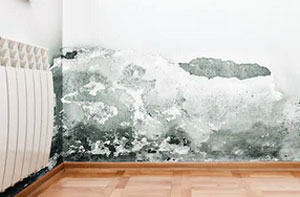
• Penetrating Damp
• Condensation
• Rising Damp
The following paragraphs describe the causes of such damp problems in the UK, and the various ways of preventing and solving them.
PENETRATING DAMP
External factors such as damaged guttering, cracks in brickwork, cavity wall issues, or broken roof tiles can contribute to the onset of penetrating damp. On the interior, this problem can manifest through cracked shower trays, leaky or burst pipes, and overflowing sinks and bathtubs. When left unaddressed, these issues enable water infiltration into walls and wooden structures, leading to the gradual emergence of telltale signs, including the appearance of dark damp patches on walls, the deterioration of plaster with blistering and breakage, and the peeling of paintwork.
When a roof develops a persistent leak that goes unaddressed over time, it can result in the development of wet rot within the timber framework of the roof. Wet rot does not extend into brickwork, but in severe cases, it can compromise the structural integrity of the roof timbers, necessitating a complete roof replacement. Detecting wet rot involves observing the presence of black fungus on the wood surfaces, a soft and spongy texture in the timber, and a distinct musty odor emanating from the decaying wood.
Proactive maintenance measures encompass a range of tasks, including gutter and roof cleaning to prevent leaks, repointing brickwork, and inspecting pipes for potential leaks. When addressing dampness issues, a certified damp proof service provider will meticulously examine these areas, ensuring that they are free from issues that could exacerbate the problem, thus contributing to a comprehensive resolution of your dampness concerns.
CONDENSATION
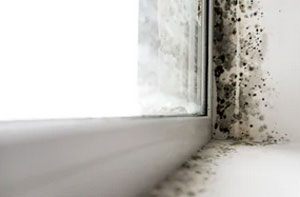
Condensation is a prevalent and easily recognisable form of dampness that plagues many households. This occurs when warm, moist air meets cooler surfaces, resulting in the formation of water droplets. Inadequate ventilation in areas characterized by high humidity, such as kitchens, bathrooms, and boiler rooms, is often the root cause of this issue.
Effective measures to tackle condensation involve immediately mopping up any moisture beads upon their appearance and guaranteeing adequate air flow in the impacted zones. This could necessitate the fitting or upgrading of extractor fans, cooker hoods, and air vents, all designed to promote the removal of humid air from your residence to the external environment. Enhancing ventilation could also mean opening windows regularly to allow fresh air in and stale, moist air out, especially in high humidity areas like kitchens and bathrooms. Additionally, considering the use of dehumidifiers in particularly damp rooms can further assist in maintaining a dryer indoor climate, thereby reducing the likelihood of condensation forming.
A thorough damp proofing assessment conducted by a trustworthy company can pinpoint areas that exacerbate the issue by drawing in damp air from the exterior. Proper regulation of airflow is crucial for effectively managing condensation problems, and a skilled damp proofing expert is well-equipped to provide valuable insights and solutions in this regard.
RISING DAMP
Properties constructed in the UK after 1875 have typically incorporated a standard practice of installing a damp proof course or membrane. However, for those whose homes were constructed prior to this era, the absence of such a feature is a possibility. In the event that you are encountering issues with rising damp in a dwelling constructed after this date, it is conceivable that your damp proof course or damp proof membrane may have incurred damage of some sort.
Detecting rising damp can pose a challenge, but there are certain telltale signs to watch for. Keep an eye out for signs such as skirting boards that are deteriorating or showing signs of rot, the emergence of a white powdery deposit on walls or its presence on the floor, and the presence of tide marks on the walls. If you observe any of these indicators in your home, or suspect that they might be present, it's plausible that you may be dealing with a rising damp issue. In such cases, it's advisable to seek professional assessment and remediation to address the problem promptly and effectively.
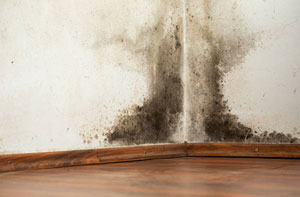
Addressing rising damp issues can often involve relatively straightforward steps. Begin by inspecting your exterior walls to determine whether a damp proof course is in place. A proper damp proof course should be situated around 150mm above ground level to provide sufficient protection. If you find that this requirement isn't met, you have a couple of options. Firstly, you can excavate the soil around your property to create the necessary gap between the ground and the damp proof course. If excavation is not a feasible solution, you can explore the possibility of installing a higher damp proof course to ensure effective damp prevention. Consulting with a professional in damp remediation can help you determine the best course of action for your specific situation.
If you've confirmed that your damp proof course is in good condition and correctly positioned, yet you still face issues with rising damp, it's important to consider the possibility of more challenging underlying problems. These issues could be related to moisture seeping up from the ground, infiltrating your flooring, and subsequently affecting your walls. In such cases, it may be necessary to undertake a more comprehensive assessment to identify the root causes and implement appropriate solutions to mitigate the moisture-related challenges in your home. Consulting with a qualified damp specialist can be invaluable in diagnosing and addressing these complex issues effectively.
Professional damp proofing specialists possess the expertise to promptly identify and address rising damp through a range of effective methods. In cases where you have an older house without a damp proof membrane or where the membrane has sustained extensive damage, one viable solution involves the use of damp proof cream. This process entails drilling holes at specified intervals into your brickwork and then injecting the cream into these holes using a specialized nozzle. The cream is designed to fill the gaps behind the brickwork, extending down to below ground level, thus creating a barrier against rising damp. This technique is a valuable means of safeguarding your property against the damaging effects of moisture infiltration.
In situations where the use of damp proof cream is not a viable option due to unsuitability or extensive membrane damage, a more comprehensive solution may be necessary, which involves the installation of a new damp proof course. While this constitutes a more drastic and involved repair process, it can often prove to be the sole effective resolution for persistent damp issues. Installing a new damp proof course serves as a robust and long-lasting measure to combat damp problems, ensuring the preservation and protection of your property against moisture-related damage in the long term.
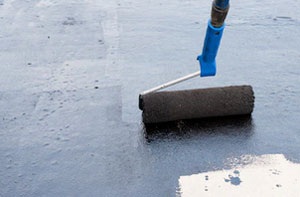
For more localised instances of damage, an alternative solution involves the application of a bitumen-based waterproof latex emulsion. This process typically entails applying the emulsion beneath your floor coverings, such as carpets, tiles, or wooden flooring. Prior to the work being carried out, these floor coverings will need to be lifted. This method proves particularly effective in basement areas as part of the tanking process, which aims to establish a watertight environment. To enhance protection in these vulnerable areas, your damp proof specialist may recommend the application of building paper, often a foil-backed specialist membrane, before the bitumen paint fully dries. This combination of measures serves to reinforce the defense against moisture infiltration in these problematic zones of your property.
Tanking, particularly in areas like basements or sections below ground level, involves the application of a waterproof paint to create a watertight seal on exposed surfaces. To execute this process effectively, it's crucial to apply the paint at the base level of both floors and walls. This means that any existing wall coverings and plaster must be removed and properly prepared before the tanking work can commence. Once the paint has been applied and allowed to dry, you can then proceed with re-plastering and decorating the area as desired.
It's worth noting that tanking can be a rather disruptive undertaking, especially if it needs to be applied to an entire ground floor or basement level of a property. In such cases, it is advisable to seek multiple expert opinions to ascertain whether tanking is indeed the sole solution to your damp-related issues. Gathering various perspectives from professionals in the field can help you make an informed decision about the most appropriate course of action for your specific circumstances.
DEHUMIDIFIERS AS A SOLUTION TO DAMP PROBLEMS
Dehumidifiers serve as effective tools for extracting excess moisture from the air, making them a valuable resource in addressing condensation-related problems. However, it's important to recognize that when it comes to preventing damp, dehumidifiers primarily serve to mitigate the symptoms rather than addressing the root cause of the issue. To achieve a comprehensive and lasting resolution to damp problems, it's advisable to consult with a professional damp proofing company. These experts can assess your specific situation and provide guidance on the most suitable and effective solutions for damp-related concerns in any area of your property.
FINDING A REPUTABLE DAMP PROOF COMPANY IN UK
When seeking the services of a specialist, it's often wise to begin by seeking recommendations from friends and family who have had similar work done. Their firsthand experiences can provide valuable insights into reputable professionals in the field. Additionally, it's a good practice to obtain quotes from at least three different companies to ensure you're making an informed decision based on competitive pricing and services.
In cases where you have doubts or concerns about the qualifications and expertise of a damp proofing service provider, don't hesitate to request to see their qualifications and professional membership certificates before committing to their services. This step can help you verify their credentials and ensure that you're engaging a qualified and trustworthy professional for your damp-related needs.
Look for qualifications and membership from organisations such as the Property Care Association (PCA) and the Damp Proofing Association (DPA), or contractors holding the Certificated Surveyor of Timber and Dampness (CSTDB) or the Certificated Surveyor in Remedial Treatments (CSRT) professional qualifications.
Membership of the PCA or DPA guarantees your chosen damp proofing provider is suitably qualified and has the necessary experience to perform a first class damp proofing service. It also offers a guarantee over any remedial work supplied by one of their members.
Positive Input Ventilation
Positive Input Ventilation (PIV) is an effective and energy-efficient ventilation system designed to improve indoor air quality and reduce condensation issues in residential properties. This ingenious system works by introducing fresh, filtered air into the living spaces from outside, typically through the loft or roof space. The principle behind PIV is to create a positive air pressure within the building, which forces out stale and moist air through natural leakage points like windows and doors.
One of the significant advantages of PIV is its ability to help combat issues such as dampness, condensation, and mold growth by maintaining a consistent flow of fresh air throughout the property. This not only ensures a healthier living environment but also promotes energy savings as it reduces the need for heating and dehumidification. PIV systems are generally unobtrusive, quiet, and easy to install, making them a valuable addition to homes looking to enhance air quality and comfort while also addressing moisture-related problems
Black Mould
Black mould is a type of fungi that thrives in damp and humid environments. It is characterised by its dark black or greenish-black appearance and can grow on various surfaces, including walls, ceilings, floors, and even household items. This mould is commonly found in areas with poor ventilation, high moisture levels, and inadequate sunlight, making bathrooms, basements, and kitchens particularly susceptible.
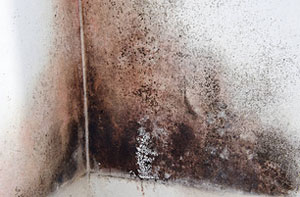
Not only is black mould unsightly, but it also poses health risks. When its spores become airborne, they can be inhaled, potentially leading to respiratory problems, allergies, and other health issues. Those with compromised immune systems, allergies, or asthma are especially vulnerable to its adverse effects.
Preventing the growth of black mould is essential. This can be achieved by addressing the underlying moisture issues, improving ventilation, and maintaining proper cleanliness. Regularly inspecting and addressing leaks and water damage is crucial in reducing the risk of mould growth.
If black mould is discovered in your home, it is important to take prompt action to remove it safely. This may involve cleaning with appropriate cleaning solutions or, in severe cases, seeking professional assistance. Regular maintenance and vigilance are key to keeping your living space mould-free and ensuring a healthier environment for you and your family
Woodworm Treatment
Woodworm treatment is a crucial process for protecting wooden structures from the damaging effects of wood-boring beetles. These beetles lay their eggs in the cracks and crevices of wood, and upon hatching, the larvae burrow deep into the wood, feeding on it and creating a network of tunnels. Over time, this activity weakens the structural integrity of the wood, leading to significant damage.
The treatment process typically involves identifying the extent of the infestation and selecting an appropriate method to eradicate it. Common treatments include the application of chemical insecticides, either sprayed or injected, which penetrate the wood and kill the larvae. In more severe cases, infested wood may need to be removed and replaced.
Prevention is also a key aspect of woodworm management. Regular inspections, maintaining a dry environment, and treating new wood with preservatives can significantly reduce the risk of infestation. Professional assessment is recommended for effective treatment and prevention, ensuring the longevity and safety of wooden structures and furniture
UK Damp Proofing Tasks

There is a range of work that can be undertaken by your local UK damp proofing specialist including condensation treatment, external damp proofing UK, damp course installation, cellar tanking UK, damp surveys, commercial tanking, solving mould problems, invasive weed control UK, damp proofing a garage, timber surveys, cheap damp proofing UK, pressure grouting, chemical DPC injection, rising damp prevention, cellar damp proofing UK, condensation solutions UK, damp proofing cream treatments in the UK, damp proofing old stone walls UK, damp control, damp proofing quotations in the UK, solutions for black mould, garage floor damp proofing UK, cavity wall tie replacement, rising damp solutions, cellar waterproofing, rendering repairs, wet rot treatments, damp proofing a cellar, cementitious tanking in the UK, wood rot treatments in the UK, damp proof paint applications, cavity wall construction in the UK, brickwork damp proofing UK, rising damp advice, flood defence UK, and lots more. Listed are just some of the activities that are handled by those specialising in damp proofing. UK contractors will inform you of their entire range of services.
Damp Proofing Services UK
- UK Condensation Treatment
- UK Timber Preservation
- UK Cheap Damp Proofing
- UK Damp Proofing Services
- UK Dry Rot Treatment
- UK Damp Proofing Surveys
- UK Cellar Waterproofing
- UK Residential Damp Proofing
- UK Commercial Damp Proofing
- UK Wet Rot Treatments
- UK Mould Treatment
- UK Woodworm Treatments
- UK Dampcourse Installation
- UK Commercial Tanking
More UK Tradespeople

Undoubtedly, whenever you're doing home remodeling in the UK, you are likely to need all sorts of different tradespeople and along with a damp proofer in the UK, you might additionally need stone & brick cleaning in the UK, a carpenter in the UK, a building contractor in the UK, bricklayers in the UK, repointing in the UK, a tiler in the UK, flooring specialists in the UK, cellar conversion in the UK, electricians in the UK, a painter and decorator in the UK, a handyman in the UK, SKIP HIRE in the UK, scaffolding in the UK, plumbers in the UK, plasterers in the UK, rendering in the UK, pebble dashing in the UK, waste removal in the UK, screeding in the UK, and other different UK tradesmen.
 Damp Proofing UK
Damp Proofing UK Damp Proofing Near UK
Damp Proofing Near UK Damp Proofing Specialists UK
Damp Proofing Specialists UKMore UK damp proof specialists: Damp Proofing Solutions, Domestic Damp Proofing, Waterproofing, Dampcourse Installation, Damp Proofing Solutions, Basement Waterproofing, Residential Damp Proofing, Damp Proofers, Damp Proofing Solutions, Dampcourses, Damp Proofing Surveys, Domestic Damp Proofing, Dampcourses, Damp Surveys, Damp Proofing Specialists, Cheap Damp Proofing, Damp Proofing Experts, Damp Proofers, Damp Treatments, Damp Proofing, Condensation Control, Cementitious Tanking, Waterproofing, DPC Installation, Timber Preservation, Damp Proof Services, Damp Proofing Experts, Condensation Prevention, Damp Proofing Surveys, Cheap Damp Proofing, Dampcourse Installation, Cheap Damp Proofing, Damp Proof Services, Dampcourses, Damp Proofing Companies, Damp Proofing Experts, Condensation Control, Dampcourses, Damp Proofing Specialists, Condensation Control, Cementitious Tanking, Damp Proofing Solutions, Cementitious Tanking, Commercial Damp Proofing, Condensation Control, Damp Proofing Services, Damp Proofing Solutions, Damp Proofing Experts, Waterproofing, Cheap Damp Proofing, Commercial Damp Proofing, Cheap Damp Proofing, Timber Preservation, Condensation Control, Damp Proofing Surveys, Damp Surveys, Cellar Waterproofing, Cementitious Tanking, Damp Proofing Services, Dampcourse Installation, Commercial Damp Proofing, Condensation Control, Damp Proofers, Residential Damp Proofing, Dampcourses, Waterproofing, Damp Proofers, Basement Waterproofing, Cheap Damp Proofing, Damp Proofing Experts, Residential Damp Proofing, Dampcourse Installation, Damp Proof Services, Damp Treatments, Damp Proofing Surveys, Damp Proofing Specialists, Waterproofing, Residential Damp Proofing, Damp Proof Services, Commercial Damp Proofing, Damp Proofers, Damp Proofing Experts, Residential Damp Proofing, Basement Waterproofing, Domestic Damp Proofing, Condensation Control, Damp Proof Experts, Damp Proofing, Timber Preservation, Dampcourse Installation, Damp Surveys, Dampcourses, Cellar Waterproofing, Damp Proofers, Residential Damp Proofing, Domestic Damp Proofing, Damp Surveys.
Woodworm Treatment - Domestic Damp Proofing - Damp Proofing Specialists - Timber Preservation - Damp Proof Experts - Dry Rot Treatment - Cheap Damp Proofing - Damp Proofing Near Me



